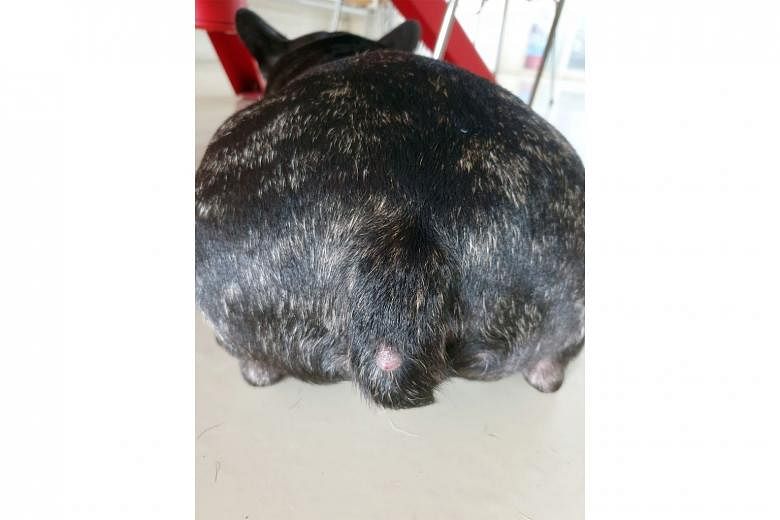Bald spots on cat
Do you think the bald spots on my cat are due to an infection by ticks or mites?
David Lee
From your photos, it looks like your cat has multiple areas of fur loss around his body. We cannot tell exactly what is causing the fur loss without further skin tests, such as getting a skin scrape of the area and looking at it under the microscope.
Common causes of fur loss can range from parasites such as mites and fleas to bacterial or fungal infections to allergies to food or other allergens to over-grooming, which could have other underlying factors such as stress.
Regardless of the cause, it is important to keep up with your regular external parasite treatments to keep your cat protected against mites, fleas and ticks.
This should be done even when the condition of your cat's skin and fur appears to be fine.
Lump on pet's tail
I discovered a hard lump on my pet Si-Koh's tail. It seems to be growing bigger and is causing fur loss in the affected area. There are no signs of itch or pain. Please advise if the lump is harmful and what could be the cause of it.
Rebecca Wong
It is not possible to determine whether the lump is harmful from merely the appearance, which is why you should take your dog to the vet, especially as you have noticed that the lump has been growing in size.
-
FUN FACT
Did you know a cat's sense of smell is about 14 times stronger than humans'?
Cats have 200 million odour sensors in their noses, while humans have just five million.
They use these odour-sensitive cells to decide if food is safe to eat and search for a mate. But it also means that strong odours and fragrances - such as household cleaners, scented candles, perfumes and pungent food - may cause discomfort to them.
The vet will take a closer look at it and might take a sample by doing a fine-needle aspirate or conduct other diagnostics to find out what it could be.
It will also be helpful to provide the vet with information on when you first noticed the lump, its size when you first noticed it, how much it has grown and if there are any changes in appearance - such as hair loss - as well as whether it feels hard or soft.
Guinea pigs flee from touching
My guinea pigs run away when I try to touch them. What is the cause of this and what can I do to prevent it?
Joyce Sen
Guinea pigs are shy animals by nature, so it is instinctive for them to flee from what they perceive to be unfamiliar or threatening.
To try to reduce such a reaction, you should approach them calmly and slowly and let them sniff you without attempting to pat or pick them up. You can offer them food or treats with your hand to allow them to get used to your smell and form a positive association with your smell and hand.
Their enclosure should include a hiding place for each of them so they can feel safe if they are stressed.
You may be surprised, but a guinea pig that is more confident in its environment will be more willing to come out and interact with you.
• Answers by Dr Denyse Khor, who cares for domestic pets as well as wildlife. Dr Khor, who graduated from the University of Melbourne in 2015, is a veterinarian in the Animal & Veterinary Service under the National Parks Board.
Write in
Have a query about your pet? E-mail it with clear, high-resolution pictures of at least 1MB, if any, and your full name to stlife@sph.com.sg. We reserve the right to edit and reject questions.



